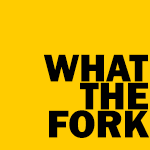[ad_1]
Isn’t it a bit bleak and melancholy, that whole of Mumbai’s culinary heritage and credentials are now encapsulated and abridged into that one dish which is called a Vada Pao. How is it even possible that a melting pot of a city, with more diversity than a packed local train, could so lionize a mere accident of a snack. Don’t get me wrong, I love Batata Vadas and I adore Pav, but the streets of Mumbai must get credit for a lot more tour de force than it already does.
Starting with the Bhel Puri, Sev Batata Puri, Dahi Batata Puri and Pani Puri. Yes, I know you will immediately pipe up, saying that all these Puris have been bequeathed to us from the North Indian chaat and are not originally from Mumbai; that the Batata Wada is purely Maharashtrian and the Bhel is not, hence the Vada Pav is the rightful owner of the Mumbai mantle. I disagree because there is no place on earth where the Bhel Puri, Sev Batata Puri, Dahi Batata Puri and Pani Puri, tastes like it does in Mumbai. Although created by North Indian Mumbaikars, this chaat was born in Mumbai, with a Mumbai recipe, with a combination of ingredients and chutneys that are put together for the palate of a Mumbaikar. For instance, the puffed rice in a bhel, never found in any chaat in the north, though you do find a version in the east. Just because the Bhel was not invented by a Maharashtrian from Dadar, it doesn’t make it a lesser Mumbai native.
Which brings me to yet another iconic Mumbai favourite that stands shoulder to shoulder with Bhel Puri and Vada Pao, as a beloved of Mumbai cuisine. The ‘Bombay Sandwich’. Obviously the sandwich itself is an old British import. But before the British invaded India with the sandwich, we were already under-the-table over what the Portuguese enticed us with. Bread and potatoes. All that was left to do was to embrace and adapt it.
No one I know of, can actually date the invention of this Bombay sandwich, but it is possible that, like most Mumbai street food, the sandwich too, was fabricated to nourish the many single migrant workers who came to work in the city’s booming mill industry in the 60s and lived without their own kitchens.
The Bombay Sandwich is purely vegetarian. I cannot fathom a non-vegetarian version of it. Originally, the sandwich was not toasted, as most sandwiches were not. Purely street side, the sandwich-wala would put up his stool with a makeshift box on top and a small working shelf. Wrapped sliced bread, most often made by “Wibs” (because they made larger slices than the ones made for home consumption) would be piled up. Wibs, even now, makes one of the softest white sliced breads that you can find. Two stainless steel tins, one with yellow-salted butter, the other with green chutney made from coriander and, green chillies were on the side, along with smaller shakers of salt and chaat masala, and then a plastic squeezy bottle of pumpkin sauce, the cheaper option to tomato ketchup. The pumpkin sauce was a mass manufactured unbranded sauce, light orange in colour, which was used by many cafes and roadside vendors as a cheaper alternative to branded tomato ketchup which was reputedly too expensive for street food. Even today, you will find restaurants are reluctant to place on tables, liberal amounts of tomato ketchup for the same reasons.
The sandwich starts off as two large bread slices with the edges cut off, buttered on one side and slathered with chutney on the other. Which is then piled on with thinly sliced boiled potato and boiled beet root, add to that sliced cucumber, rings of raw onion and juicy red tomato, sprinkled with salt and chaat masala, and then cut into either four or six squares, depending on the size of the bread, and topped with sauce, served on waxed sheets of old bread wrapper paper. You had to literally open your mouth to its limit to put one of those club sandwiches into your mouth. It was squishy, crunchy, spicy and buttery all at the same time.
It did not take much time for these street side innovators to start offering their customers a hot version. On a small coal stove, with the most ingenious metal sandwich griller, the same sandwich would be grilled in this blackened utensil, by turning it around on both sides on hot coals, till the bread turned crisp with all the butter and heat. The only addition to this was cheese, which melted along the way. Again, cut into four or six squares with cheese melting from the sides, this compressed toasted sandwich is still one my favourites. Nowadays, they also sprinkle sev or bhujia on top of the sandwiches which I find an unnecessary embellishment and quite abhorrent.
The Bombay Sandwich has over the years gone through many spin-offs, renditions and interpretations. My most favourite is the Bombay Masala Sandwich. It is the same buttery bread with chutney, stuffed with mashed spiced potato. The mashed potato is actually the same kind of Aloo that is served in an Aloo-Puri or a Masala Dosa. Add to that cheese and anything else that you can imagine, and toast it over hot coals. The edges of the Bombay Masala Sandwich come out slightly charred, the centre crisp yet plump and juicy, the explosion hot and cheesy, the taste spicy and rich. Along with the Bhel, the diversity, like this city’s own diversity is what makes the Bombay Sandwich a truly Mumbai dish.
Kunal Vijayakar is a food writer based in Mumbai. He tweets @kunalvijayakar and can be followed on Instagram @kunalvijayakar. His YouTube channel is called Khaane Mein Kya Hai. The views expressed in this article are those of the author and do not represent the stand of this publication.
Read all the Latest Lifestyle News here
[ad_2]
Source link



